about

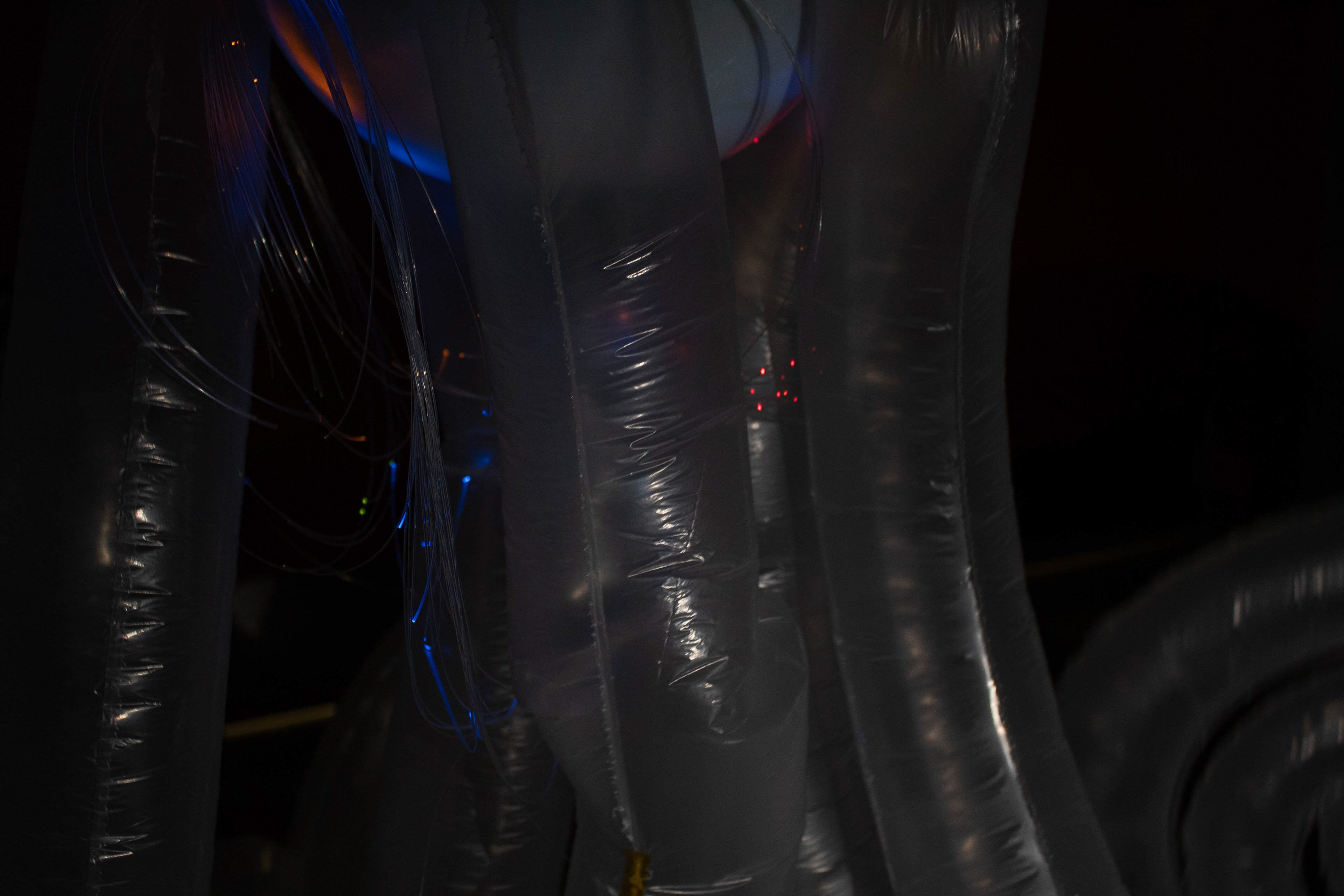
Bioluminescence exists in ocean organisms as tiny as dinoflagellates and as large as anglerfish, ranging from sea surface to depths of 1,000 meters. The crystal jelly’s green fluorescent proteins function as a defense mechanism. The bobtail squid’s symbiosis with bacteria A. fischeri allows for a counterillumination camouflage mechanism. Through chemical reactions and symbiotic relationships, organisms are able to produce light to protect themselves, sense their surroundings, and communicate with each other. An increasingly-studied phenomenon, the adaptation of bioluminescence offers us a window into the vastly different umwelt of ocean organisms as they interact with their environments.
Inspired by existing bioluminescent species as well as existing jelly organ structures, Pneumatozoa is a new class of Cnidarians (jellies). These organisms are characterized by circulatory systems of air; while other Cnidarians have water-vascular circulatory systems, Pneumatozoa are able to draw high volumes of oxygen from water with a specialized organ surrounding their gastrointestinal cavity. Pneumatozoa seeks to explore the future of rapid evolution in the ocean; with increasingly warm and acidic oceans, jellies are among organisms that hold potential in extreme conditions through adapting simple yet powerful mechanisms of survival.
This particular species, P. luminescens, is nocturnal and bioluminescent– it relies on light cues to determine when its diurnal predators are dormant. Humans have complex eyes with a cornea and retina, but P. luminescens interacts with the world through a compound light-sensing organ; when she senses darkness, she awakens.
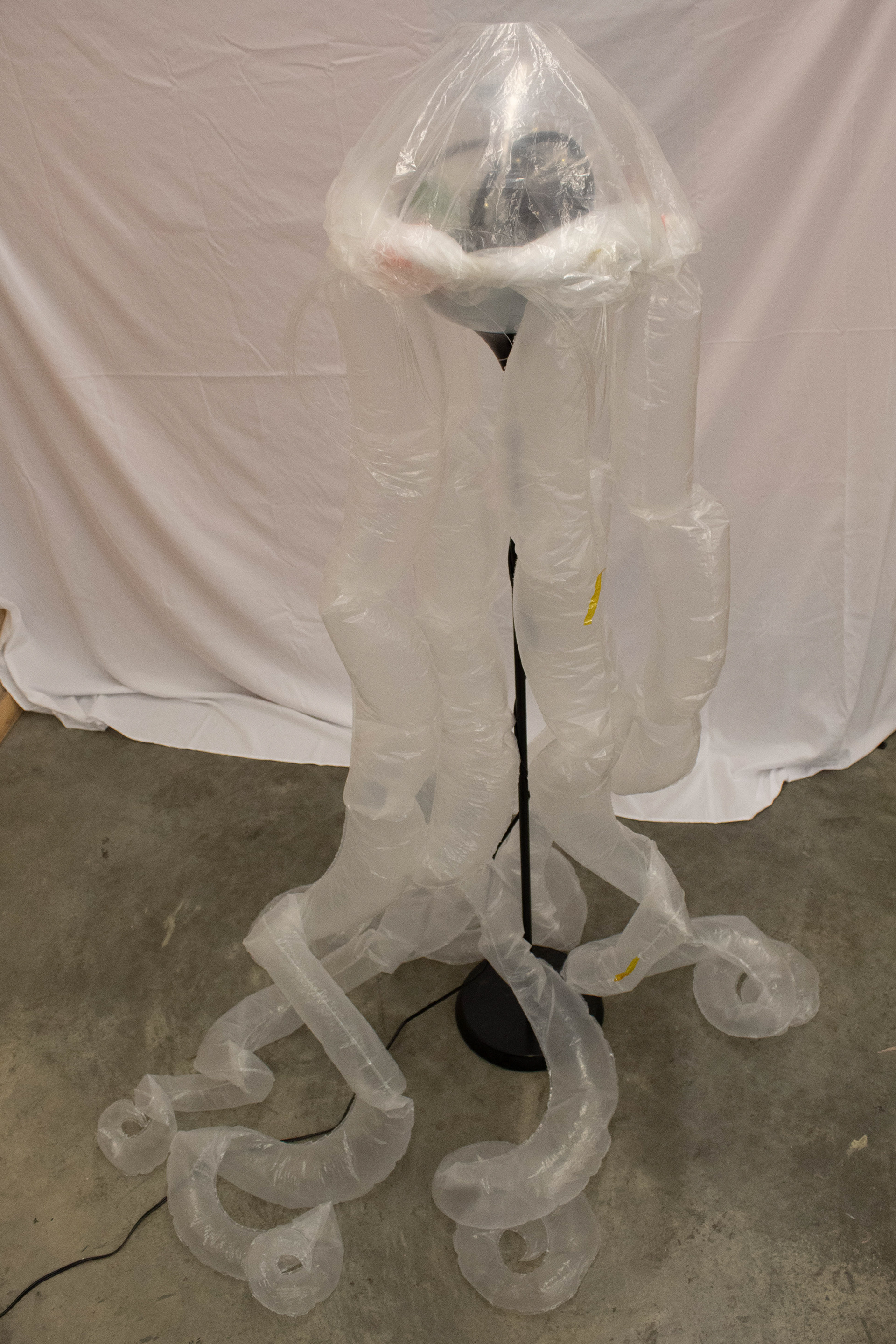

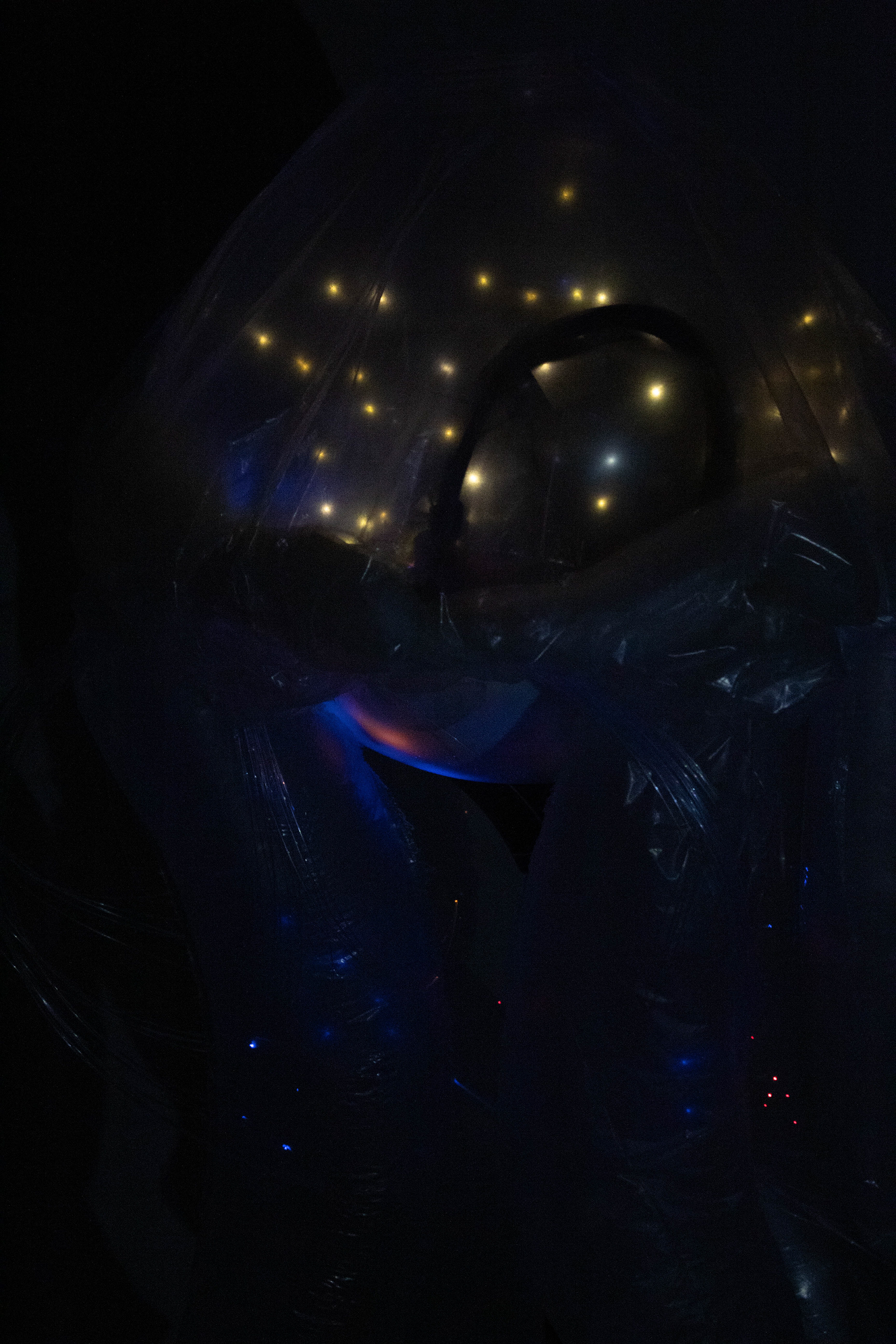
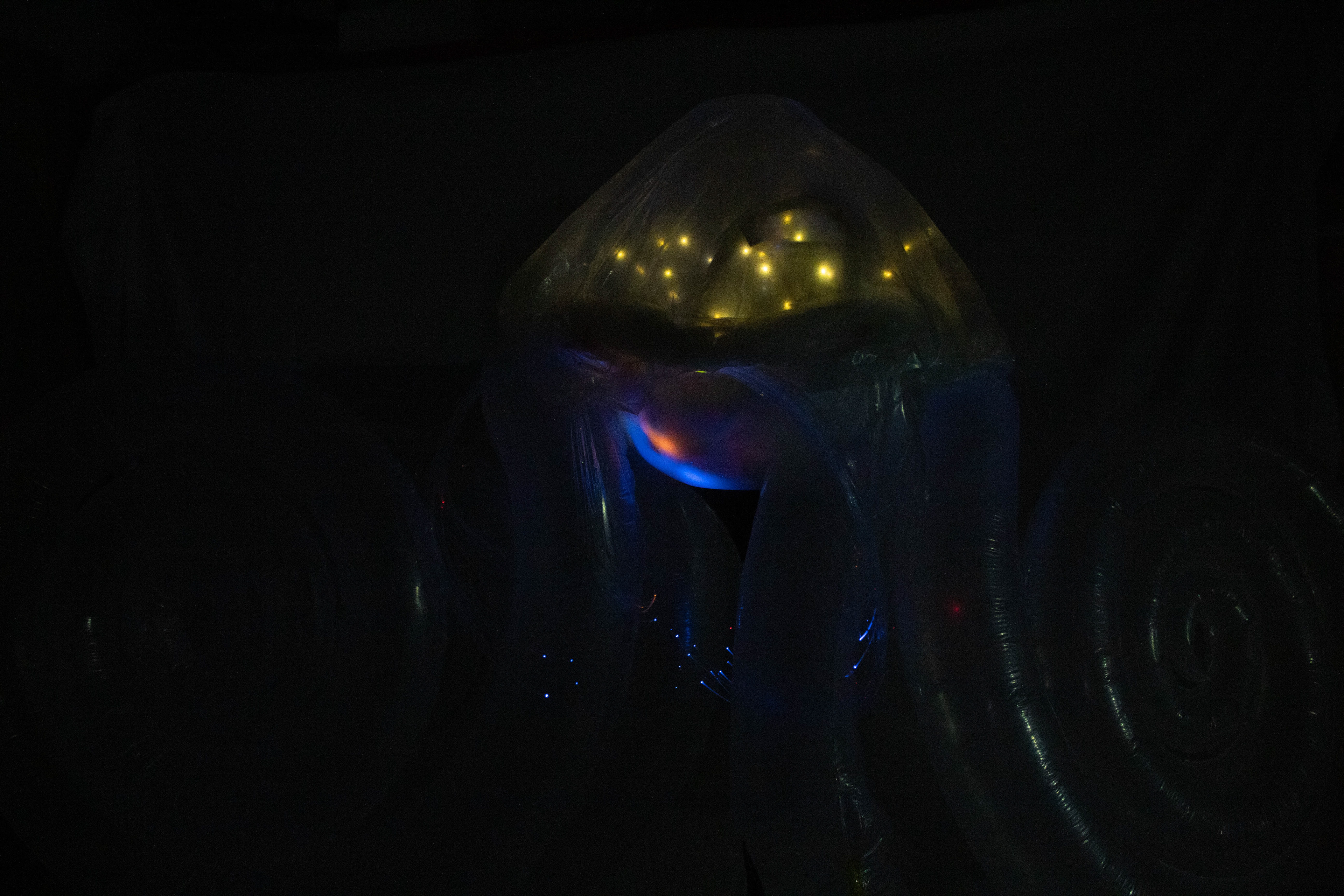
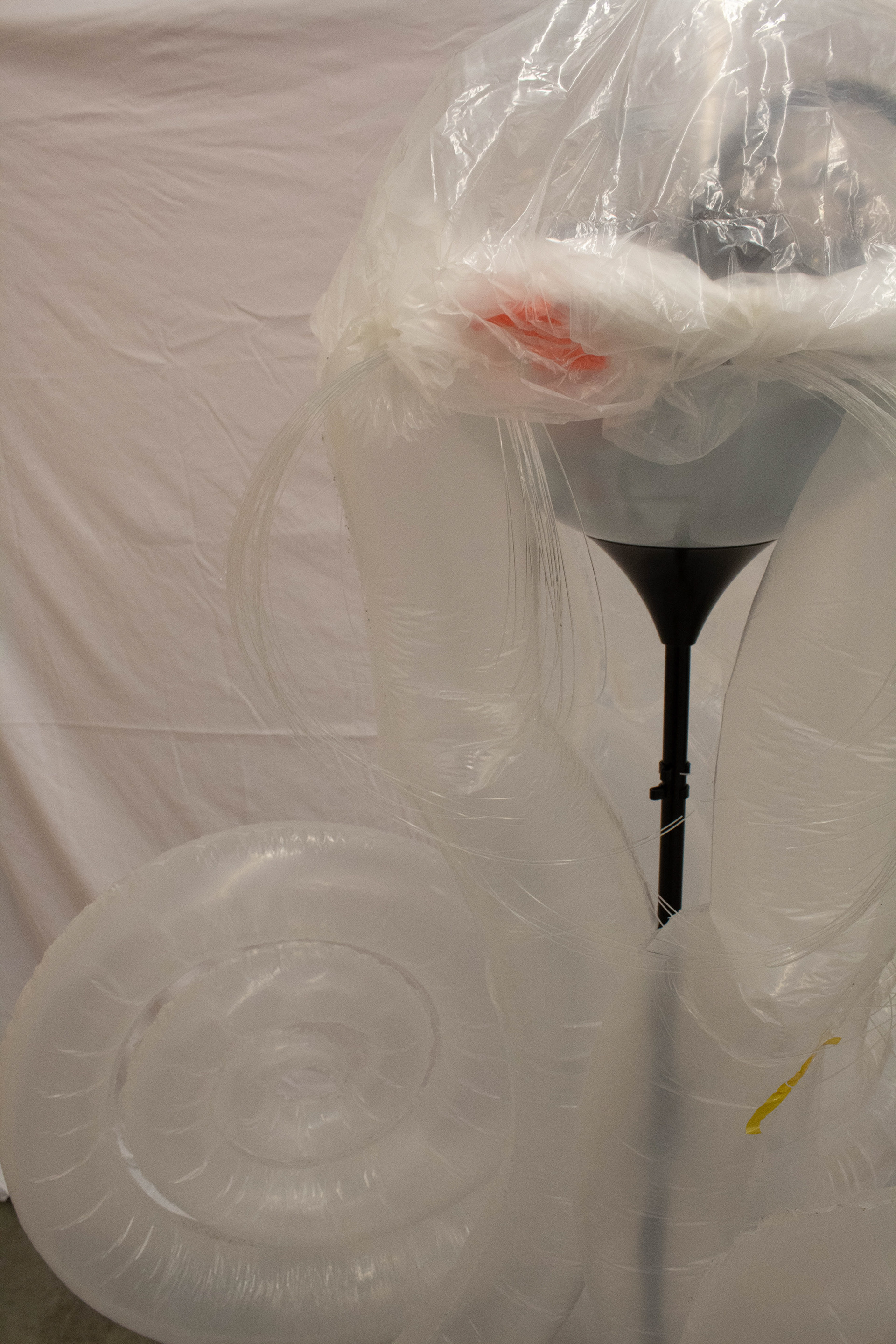
left to right: Will Stock, Sarah FUchs, Nik Mittelsdorf, Arya Natarajan
images by sarah fuchs